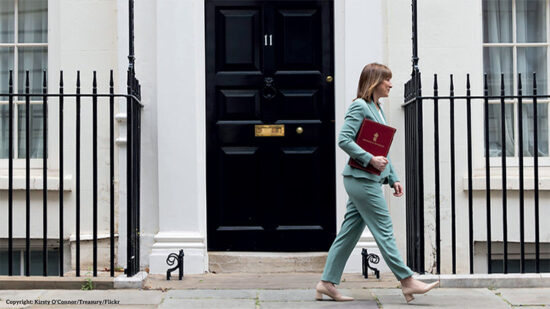Sterling
Sterling was dragged lower against the US dollar in the first half of last week by the collapsing euro, but at least managed to make headway against the single currency. However the unexpectedly bad Gross Domestic Product (GDP) numbers temporarily put the skids under it, before it regained its poise to finish in good shape. It was interesting to note that when risk came back to haunt the markets in the first half of the week, the big winners against the single currency were the Japanese yen and US dollar, closely followed by Sterling and some Scandinavian currencies. The British currency is becoming increasingly important as a reserve currency, and as such, a haven during risky times. Even poor GDP numbers had a very limited effect, so we feel it would need some really bad UK news, or good Euro news, to weaken sterling too much in the short term.
At this week’s Bank of England Monetary Policy Committee meeting, the markets will be waiting to see if the poor GDP numbers will influence rate decisions. It’s probably too soon after the increase in QE last month to act again; however if data continues to come through on the weak side, further QE or even a lowering of the official rates to 0.25% cannot be ruled out. There is room for further upside versus the euro and a test of €1.30 is possible, barring any unexpected actions from the European authorities. However the move is getting extended and bouts of profit taking will doubtless occur. Against the US dollar, the current ranges look likely to persist.
US dollar
A volatile week on the currency markets with early dollar strength giving way to a bout of selling after comments by ECB Governor Draghi spooked investors who were short of euros. There were few important data releases out of the US, and those that were out were on the weak side. The dollar continues to swing between bouts of strength due to risk aversion, and short bursts of weakness due to false hopes being raised that Europe might actually do something to sort out the financial issues. It’s unlikely this will happen anytime soon, so for now we see the range trading continuing on both euro and sterling, with a downward bias on EUR/USD.
This week sees the month’s most important economic releases, the Non-Farm Payroll and Unemployment data. After last month’s poor numbers the markets will be looking for a rebound and a higher figure than the 80k rise last time round. While this may have a short term impact, events in Europe will continue to overshadow the economics. We see range trading persisting for now, with a downward bias on EUR/USD. Against sterling, it’s worth noting some technical levels that may be tested. Sterling remains in an uptrend, with the important $1.5437 level being a big support point. On the upside $1.5747 is the 200 day moving average and a break could see a move to $1.5950 in fairly quick time.
Euro
As someone once said of football, it’s a game of two halves, and thus it proved to be of the euro’s performance last week, especially against the US dollar. With Sovereign debt issues rearing their ugly head again, the euro fell sharply across the board to reach new 3 ½ year lows against sterling, only to be saved by some strong comments by the European Central Bank (ECB) Governor. However talk is cheap and its actions that will be needed to give the euro a permanent boost, so this latest pull back may just be a temporary reversal in a market that was heavily short of euros.
Once again investors are being promised that the ECB and European governments are behind the euro and will do all they can to support it. This rhetoric will have a short term impact, but needs to be followed up by actions. The hope is that the ECB will start to buy Spanish and Italian bonds again, thus easing the pressure on the countries funding costs. This week’s ECB meeting and rate decisions should be interesting. A number of analysts are now pointing to levels of sub $1.20 for the EUR/USD, by end Q3 and Q4. We find it hard to disagree, and given any substantive actions by the ECB, Finance ministers etc, these euro rallies will soon fade. Against sterling, the same applies, and a retest of the weeks high at €1.2890 could be seen again this week.
New Zealand Dollar
The kiwi dollar ended last week broadly flat versus the pound, but up strongly versus the US dollar as the Reserve Bank of New Zealand left interest rates on hold and global risk appetite picked up following comments from ECB President Mario Draghi.
GBP/NZD tested above NZ$1.9800 before falling back and is now in the same range as last week. A test of support at NZ$1.92800 remains likely in the near future, with the upside now capped between NZ$1.9800 and NZ$1.9825.
Australian Dollar
The Aussie continued to push ahead last week as strong words from European Central Bank Governor Draghi prompted a move into riskier assets. The Aussie has risen 2.9% on a trade weighted index over the last month, the best performance among the 10 major currencies. With investors looking for a safe haven and a yield, the AUD fits the bill, and the currency strengthened below A$1.50 against Sterling last week for the first time since March. Although it has subsequently rebounded, longer term some analysts are looking at the all time low of A$1.4549 as an area that could be tested.
The Australian economy continues to fare better than its most of its peers. The Reserve Bank has noted that the economy continued to grow in the first part of 2012, something not happening in most other G10 countries. Inflation remains benign but business confidence data is subdued, a result of economic conditions abroad, especially in China and Europe. Given this, the Aussie should continue to attract investment funds due in part to its interest rates (currently 3.5%). We feel the Aussie remains attractive in the short term and would look for another test of the A$1.50 area against sterling and a test of the $1.0500 versus the US dollar.
Canadian Dollar
As with all currencies, it’s difficult to talk about the Canadian Dollar (or Loonie as it is known) without mentioning events in Europe. This was the case last week, as early weakness caused by increased tensions over Spain led to a flight to quality. The CAD dropped against a majority of its most-traded peers as crude oil fell more than $3 a barrel. Canadian 10-year bond yields reached a record low of 1.565% as investors fled to the safety of government assets. However, by mid last week the tide had turned and strong words from ECB President Draghi saw the US dollar sold across the board, and the CAD make good gains against both sterling and the US.
Analysts are still generally bullish on the loonie. While demand for its commodity products has waned particularly as Chinese growth has eased, the CAD still remains a relative safe haven. Business surveys generally remain positive, but are mindful of uncertainty elsewhere.
Firms continue to expect sales growth with intentions to increase investment over the coming year. Clearly events globally will have an impact on the CAD, but overall we see a stronger CAD going into the second half of 2012. A retest of last week’s low at C$1.5695 could be seen in the week ahead.
Against the US dollar another test of C$1.0070 looks likely with a break below parity looking increasingly probable.
Chinese Yuan
The yuan weakened sharply early last week as the PBOC sought to protect China’s export industry, although improving risk appetite towards the end of last week and some better domestic data saw it recover to end the week more or less flat.
Expect the USD/CNY rate to continue to track the EUR/USD rate for the time being, with the upside capped above 6.3900 and the downside at 6.3540.
Japanese Yen
The USD/JPY rate has traded in a very narrow range throughout last week from around 78.00 to 78.40, which has meant appreciation versus the pound until last Thursday’s comments from Sig. Draghi which boosted risk appetite and saw the pound recover all the lost ground.
The yen has stabilised versus the dollar as investors weigh the chances of intervention. As a result, a range is likely on GBP/JPY from 120.80 up to around 124.00.
South African Rand
The rand recovered lost ground through the end of last week as risk appetite returned to the market following comments from ECB President Mario Draghi, while domestic data showed that inflation remains high which may reduce the chances of further interest rate cuts.
The GBP/ZAR rate looks likely to continue in recent ranges over the coming week, trading up from support at R12.70 to resistance around R13.25. Any break of this range remains more likely to the downside.








